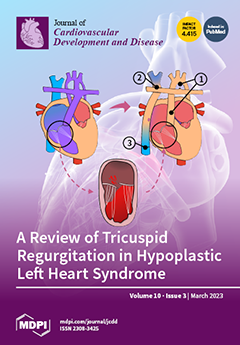 Autores: Carlos Eduardo Braga Filho, Adriano Henrique Pereira Barbosa, Lucas Antonio Duarte Nicolau, Jand Venes Rolim Medeiros, Marcelo Pires-Oliveira, Rui Manuel Dos Santos Póvoa, Tânia Carmen Penãranda Govato, Hézio Jadir Fernandes Júnior, Rafael Guzella de Carvalho, Bráulio Luna-Filho, Fernando Sabia Tallo, Erisvaldo Amarante de Araújo, José Gustavo Padrão Tavares, Ricardo Mario Arida, Afonso Caricati-Neto, Francisco Sandro Menezes-Rodrigues
Autores: Carlos Eduardo Braga Filho, Adriano Henrique Pereira Barbosa, Lucas Antonio Duarte Nicolau, Jand Venes Rolim Medeiros, Marcelo Pires-Oliveira, Rui Manuel Dos Santos Póvoa, Tânia Carmen Penãranda Govato, Hézio Jadir Fernandes Júnior, Rafael Guzella de Carvalho, Bráulio Luna-Filho, Fernando Sabia Tallo, Erisvaldo Amarante de Araújo, José Gustavo Padrão Tavares, Ricardo Mario Arida, Afonso Caricati-Neto, Francisco Sandro Menezes-Rodrigues
Journal of Cardiovascular Development and Disease. 2023 Feb 27;10(3):103. doi: 10.3390/jcdd10030103.
Background: Although several studies suggest that heparins prevent arrhythmias caused by acute myocardial infarction (AMI), the molecular mechanisms involved remain unclear. To investigate the involvement of pharmacological modulation of adenosine (ADO) signaling in cardiac cells by a low-molecular weight heparin (enoxaparin; ENOX) used in AMI therapy, the effects of ENOX on the incidences of ventricular arrhythmias (VA), atrioventricular block (AVB), and lethality (LET) induced by cardiac ischemia and reperfusion (CIR) were evaluated, with or without ADO signaling blockers.
Methods: To induce CIR, adult male Wistar rats were anesthetized and subjected to CIR. Electrocardiogram (ECG) analysis was used to evaluate CIR-induced VA, AVB, and LET incidence, after treatment with ENOX. ENOX effects were evaluated in the absence or presence of an ADO A1-receptor antagonist (DPCPX) and/or an inhibitor of ABC transporter-mediated cAMP efflux (probenecid, PROB).
Results: VA incidence was similar between ENOX-treated (66%) and control rats (83%), but AVB (from 83% to 33%) and LET (from 75% to 25%) incidences were significantly lower in rats treated with ENOX. These cardioprotective effects were blocked by either PROB or DPCPX.
Conclusion: These results indicate that ENOX was effective in preventing severe and lethal arrhythmias induced by CIR due to pharmacological modulation of ADO signaling in cardiac cells, suggesting that this cardioprotective strategy could be promising in AMI therapy.
Keywords: cardiac arrhythmias; cardiac ischemia/reperfusion; enoxaparin; low-molecular weight heparin; purinergic signaling.


